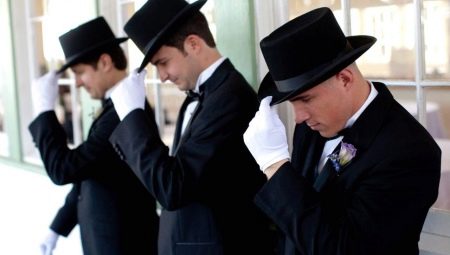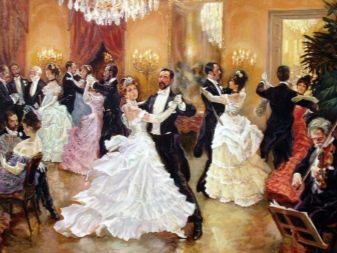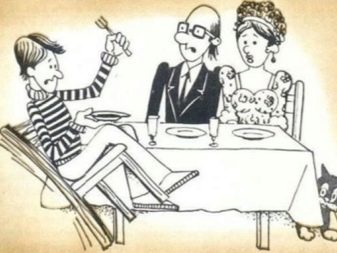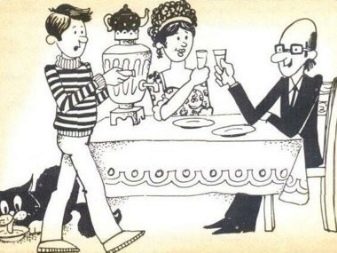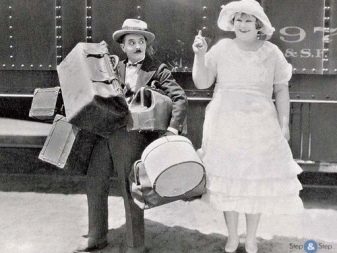Modern man regularly encounters various acute and complex life situations that require an instant, and most importantly - the right reaction. Family, social, business, economic, political relations depend on knowledge of generally accepted standards of behavior. If a person does not know how to behave properly, out of ignorance or deliberately - his business reputation suffers, his family life is bursting at the seams.
Etiquette is a regulation of behavior that affects different areas of human relationships. (communication, culture of clothes, national traditions, business relations).
What it is?
Etiquette as a historical phenomenon unites the ethical and aesthetic aspects of our existence.
Under the primitive communal system, specific norms of behavior for each group of the community began to be worked out: men were engaged in obtaining food and protection from enemies, women took fire and raised children, the elders transferred knowledge and accumulated new ones. The oldest code of conduct can be called Chinese "The Book of Historical Traditions", which tells about the basic human qualities: courage, loyalty, wisdom, humanity, respect for elders.
Centuries passed, all new customs arose, customs changed. All this merged into a single concept of etiquette. There are many different definitions of this concept. The most common suggests that etiquette is a set of rules of conduct in society.
It is interesting that for many "ethics" and "etiquette" are identical concepts. In general - this is true, the meaning of words is closely related. However, the word “etiquette” (etiquette) is of French origin, and “ethics” (ethika from ethos is a habit, character) is Greek. "Etiquette" is translated as "note, label." In France, this word meant a note - a protocol of ceremonial actions.
In Russia, the first etiquette guide appeared under Peter I, who opened a window to Europe. He was a straightforward man, he didn’t stand on ceremony with the boyars, and therefore the collection of rules of conduct at court was rather crude instructions. Introducing the Western demeanor, uniform, appearance, the king himself strictly and persistently followed the implementation of these rules.
It is enough to remember his hard law about beards. And in 1709, Peter I issued a decree according to which any person who violated etiquette was subject to punishment. Subsequently, the Empress Elizabeth and Catherine II more selectively approached the drafting of court etiquette, selecting such rules that fit the characteristics of the national color of Russia. Since this huge empire embraced Eurasia, the opposites of the West and the East intertwined in it. More than three centuries have passed, and these differences remain to this day.
Modern etiquette is a symbiosis of the traditions of all nations from antiquity to the present day. Now, when we have the opportunity to communicate with foreigners or to be abroad, it is important not only to master the language of the interlocutor, but also to navigate in national traditions, so as not to get into a foolish position and not cause a serious insult through ignorance.
It is necessary to remember common sense and show respect for others, regardless of color or social background.
Features
Modern etiquette is an important component of the external culture of a single person and society as a whole. However, there are professions in which this concept becomes dominant. This is primarily about the diplomatic service workers, politicians, cultural figures, as well as businessmen, scientists.
Today, in the world of modern technologies and operatively working media, any incorrect statement or disastrous behavior can instantly become the property of the public, not only national, but also global.
Therefore, it is so important to raise your level of culture and to understand the intricacies of etiquette.
We follow many etiquette rules automatically. A person who thinks every second about how to act correctly will find himself in the situation of an old man who was once asked a question: “Where do you hide your beard when you fall asleep? ". Never tormented by this question until now, the unfortunate lost his sleep, choosing where to hide his beard. Therefore, it is not worth remembering the rules of etiquette every minute, but knowing them is so good as to communicate without thinking about the correctness of your actions and words.
Etiquette has certain features:
- It contains universal rules of behavior, transmitted through the centuries. And the usual rules of courtesy knows every educated citizen.
- Etiquette reflects the characteristics of any ethnic group: customs, traditions, rituals.
- Etiquette is a complex system of symbols and gestures that convey information and express the attitude to the addressee. Pat on the shoulder can be a good friend, but not a high-ranking official. A man stands up if a woman enters, expressing her respect. Gestures, head movements, eyes are important during business negotiations or diplomatic visits.
- The rules of behavior have developed historically; they are not absolute, but rather of a local nature. If in one country it is customary to bow politely at a meeting of a stranger, then in another country it is a good kiss to kiss. Both that, and another will be considered as the norm accepted in this, specific environment.
- Etiquette describes the current value system in a given country. With it, you can determine the relationship between people (close and not so friendly or hostile). The location of people during various events (solemn, mourning) gives an idea of the equality (or class) of those present. For example, in Russia, the most expensive people were seated on the “upper” (best) place. "Bottom" got the least honored guests. It is enough to recall any meeting, conference: important guests take their place in the presidium, sitting face down in the hall.
But the custom to gather around the round table, which immediately causes an association with King Arthur and his knights, is a psychological device that shows the equality of all those present at the seminar, meeting, meeting.
- Etiquette is conditional, its norms offer such behaviors that can organize productive communication and increase mutual understanding. In addition, it is a manifestation of human morality. The inner world of a person has an aesthetic component, no wonder they say: “A beautiful phrase, a beautiful gesture”.
To use the rules of conduct in practice is not only necessary, but also possible, since it is more convenient for yourself and others.
Etiquette is modified by the new time, new requirements. It is unrealistic to remember all the rules of behavior, but, fortunately, this is not required. It is important to understand the main principles of etiquette and put them into practice:
- The principle of humanism.
- The principle of expediency of action.
- Aesthetic behavior.
- Respect for the traditions of their country and other countries.
The principle of humanism embodies the moral side of etiquette and includes certain requirements for the culture of interpersonal communication: politeness, modesty, tolerance.
Politeness is a multifaceted concept with many shades: it is correct politeness, delicacy, courtesy. “Accuracy is the politeness of kings”, as well as an important characteristic of the etiquette of many countries.
The following principle characterizes the ability to behave faithfully in a completely new, unfamiliar environment or an unusual situation.Anyone can be in a situation where he simply does not know the specific rules of behavior. Here will come to the rescue of upbringing, culture of behavior, sense of humor, the ability to transfer existing knowledge to a new situation of communication.
It must be remembered that it should be convenient not only to you, but also to others.
Beautiful behavior is another important principle on which etiquette is based. An untidy-dressed man, with the smell of alcohol, with a sullen expression on his face or uncontrollably loudly laughing, with a pompous and squeamish look, nodding or noisily rustling with candy wrappers from candies in the theater causes irritation and fear.
Every nation cherishes its traditions, created over the centuries, and anxious about their observance. The most ideal manners and beautiful appearance will not save from condemnation a person who will not taste the loaf presented by the Slavs, or will persistently catch the eyes of a Muslim.
In addition, there are several principles that relate to a greater degree of business etiquette, but the knowledge of which does not hurt anyone:
- the principle of subordination dictates the behavior of employees, how they should appeal to superiors, to greet them. In recent years, he has softened considerably against the background of a new managerial style - participative (from English participate);
- the principle of parity is to achieve equality of positions, regardless of position, experience.
Kinds
The variety of types of modern etiquette is impressive. Here are some of them:
Civil - a set of rules that citizens must follow when communicating with each other. It is subdivided into:
- speech;
- festive;
- conversation etiquette;
- dining room;
- professional.
- Religious - tells you how to behave in religious buildings and communicate with the clergy.
- Etiquette "weekend" - regulates the peculiarities of behavior in places of public importance: a museum, theater, restaurant, exhibition, cinema.
- The rules of everyday (unofficial) etiquette suggest how to behave in everyday life, to communicate with people on the street, in transport.
- Wedding - the rules relating to the marriage ceremony, dresses, invitations, jewelry, flowers, festive banquet. The groom, the bride and the witnesses are constantly under the gun of video and photo equipment, so they need to look and behave accordingly. But guests must follow the rules of conduct at the wedding table.
- Family - defines intra-family relations between spouses, children, immediate relatives.
- Mourning (sad) - customs and traditions of the farewell ceremony for the deceased. In this type of etiquette there is a huge amount of nuance, and each nation has its own special traditions. The Slavs mournful black is considered, and the Japanese - white. Tatars bury people in a carpet or cloth, while many Europeans in a coffin.
- Athletic - rules of conduct for coaches, athletes, fans, as well as relationships within the team and between teams.
- The etiquette of the traveler - the norms of tourist behavior in a foreign country, in which its security, the preservation of a good image of their country and respect for the national traditions of the host country.
- Secular etiquette - the rules that reflect the behavior of a polite member of society, its respect for others, demonstrating personal dignity.
- The court - regulates the behavior of the royal court in the countries-monarchies.
- Military - a collection of statutory and general rules for military personnel in all spheres of their activities and locations: part, ship, public places.
- Gender informs about the rules of conduct in connection with the differentiation in the society of male and female roles.
- Business etiquette examines the basics of business conduct: organizing business meetings, presentations, handling business cards, features of business correspondence and telephone conversations, the rules for presenting gifts.
- Corporate etiquette provides a list of rules followed by employees of the same company in relations with each other and with other organizations.
- Diplomatic.The work of a diplomat consists of 90% of knowledge of etiquette, he must know how to behave properly at various receptions, official events, negotiations, meetings, thoroughly orient himself in the traditions of the country in which he is located.
- Service. Determines the behavior of participants in the services sector: those who provide them and those who receive them.
- Network (Netiquette or Netiquette) - rules of behavior of participants of communication using electronic gadgets in the network. There are several golden rules of network communication, in particular, you should not forget that you communicate with a living person, so you need to adhere to the same standards as in reality. For example, do not write what could not say in person. Do not get involved in conflicts and do not create them - the rule is often violated by the so-called "trolls", but an educated person will not do this.
- From here follow the rules of electronic correspondence - business and private.
I would like to put a separate knight etiquette and ballroom. These sets of rules were developed several centuries ago, have not changed dramatically, but in the modern world are used in narrow circles.
Knighthood, which arose in the XI century, had a significant impact on the life of Europe and etiquette as well. Knights were devoted to noble young men who were instructed to perform many peculiar rituals: choosing a lady's heart and worshiping her, serving the lord, participating in tournaments, initiation into knights, accepting vassals. The code of the knight demanded that he strictly observe all the rules, because even the slightest deviation from them threatened to lose his honor. Not without reason in the knight’s motto were the words: “Life is for the king ... honor to no one! ".
The lot of the knights was to protect the weak, to respect all those around them, to fight only with a strong rival, not to allow cowardice even in thoughts, to have iron will. Now, in various role-playing games and reconstruction games, the participants, recreating the Middle Ages epoch, also turn to knightly etiquette.
Ballroom etiquette is a special set of rules that have not changed for centuries. It includes not only ballroom dresses (long dress with open shoulders for the ladies, a tuxedo (black dress) and black shoes for gentlemen), a culture of behavior at the ball, knowledge of all the dance figures, but also the design of ballrooms and buffet. Snow-white gloves that were never removed were considered an important accessory: for ladies - silk, above the elbow, for men - like or suede.
An important detail of the ladies toilet was a fan. Even the secret language of signs for lovers was invented, the signals were given by this elegant fan. For example, a married lady signaled: “I am married! », Revealing the fan and waving it away from the annoying suitor. A fully open fan read: "You are my idol! ".
Functions
Etiquette as a regulation fulfills certain functional duties:
- Contact settler - encourages people to communicate.
- Maintaining contact - a well-bred person will always find something to talk about in a society other than the weather. Forbidden topics for discussion with strangers: family and financial situation, political and religious views, physical inactivity of the interlocutor.
- Creating a respectful and comfortable atmosphere of communication.
- Regulatory function, or division by caste, class, position in society. Such rules were especially strictly followed in the East.
- Preventive - compliance with etiquette rules allows you to prevent conflicts.
- Informational - the rules of behavior tell people how to behave in a given situation.
- Standardization - this function is more appropriate in business etiquette and consists in the fact that the set of rules standardizes the behavior of all team members.
- Identity with others - knowing how the majority will act in a certain situation, a person will not be lost and will not feel like a stranger.
- Educational - develop positive personal qualities in children and young people.
- The accumulation and transfer of knowledge - a person learns and passes from generation to generation, the accumulated experience.
Fundamental rules
The legendary Jack Nicholson in one of his interviews noted that he is extremely sensitive to the implementation of countless rules of etiquette, since their main goal is to make our life more comfortable.
Indeed, a well-bred person looks much more attractive than someone who wipes his nose with his fist, mumbles in public or speaks on the phone among the performance.
For all their seeming infinity, the rules of etiquette are quite simple: they relate to a neat appearance, polite behavior, cultural speech and the ability to control oneself.
Consider the basic rules of good tone in Russia, as well as foreign countries:
- From early childhood, everyone is taught the important rule - do not pick your nose publicly, do not shout too loudly, do not itch.
- Turn to strangers on "you."
- Use the words of courtesy in speech.
- Do not look at the interlocutor intently or frowningly.
- Do not say those things behind the person’s back that you cannot say to the face.
- Be punctual.
- To be able to restrain both stormy delight and boiling anger.
- Always keep the promise.
- Clothes and shoes should always be clean and tidy.
- It is not customary to chase fashion if you risk looking silly and absurd at the same time.
- You can not put a mobile phone on the table in public places - thus you show disrespect for others, showing how important this gadget is for you.
- Remember the secret of correspondence! Even if you are a parent, you do not have the moral right to read the child’s personal records. The same goes for spouses.
- At the cinema, the circus always turn to face the sitters, passing to its place.
- We decided to visit friends - be sure to call in advance! These rules are especially strictly observed in Western Europe. For example, in Germany you need to call a week, informing about your visit. And you should not count on a richly laid table (as is customary with us, the Slavs) - crackers and canapes are considered the right treat for pedantic Germans.
- If you go with a companion, and he greeted a stranger, then you need to greet you too.
- When meeting the elder stretches his hand to the younger. They don’t say hello to the lady’s hand unless she becomes the initiator of this.
- Entering the room, always hello first.
- A man always respects a woman.
- Follow the rules of conduct at the table.
Examples of behavior
Since etiquette governs the rules of behavior and communication, it is very important to know how to make dating correctly. A man is presented to a woman first, the younger ones are represented as elders. If you are familiar with those present, you must personally introduce each person.
When meeting with parents need to introduce them to a new friend.
The rules of conduct between a man and a woman must know and comply with both sexes:
- Place a gentleman on the street - to the left of the companion. Only the military is allowed to go on the right, so that he can salute at any time. Female handbag is exclusively hostess.
- The first to enter the restaurant is a man, letting the head waiter understand that he will be paying.
- A man must stand up if a woman leaves the table.
- A man always helps a woman to sit at the table in the car.
- If you want to smoke in the presence of the ladies, you need to ask her permission.
- A man misses his companion ahead. The exceptions are the descent of the stairs, elevator, basement.
Table etiquette implies compliance with the following rules:
- Sit at the table exactly and do not put your hands on it. It is permissible to stick the wrists to the edge of the table.
- There is a need with a closed mouth, not slurping.
- Conversations are relevant only in the intervals between meals.
- Hands eat only bread, breaking it at the same time into small pieces.
- Use the knife and fork, the knife is shifted to the right hand for cutting products.Do not cut with a table knife only pudding, scrambled eggs.
- If you are invited to any event, then it is absolutely unacceptable to be late.
- Rules of conduct in nature say: be sure to clean up the trash, as well as foreign trash, if there is one near. Follow the rules of making fires, do not tear bird nests, anthills, do not break branches and do not pick flowers. In short, you are visiting nature, so take care of it!
International standards
Regardless of the country to which you come, you must comply with the following universal rules:
- Respect for religion, leadership of the country, traditions, cooking.
- No need to draw parallels with their homeland.
- No criticism.
- Extreme punctuality.
- It is worth exploring the banknotes of the country in which you are going, and also not to boast about your own finances.
- Always get up when you sound the national anthem. It is useful to repeat the actions of local residents.
- You should not wear national costumes without familiarizing yourself with their ritual significance.
- Speak the names correctly.
- Always show respect to elders.
- When taking unfamiliar food is not accepted to refuse and find out what it is. It is better to grind the portion and try.
- Do not use familiar gestures (for example, a thumbs-up), in another country they can mean very offensive things.
The structure of national etiquette has its own specifics in different countries - traditions, special rules of behavior in society. What nuances you need to know in:
- Of England. Prudent British prefer to maintain a distance between interlocutors and strictly observe table etiquette.
- USA. The essence of Americans is openness and friendliness. Smile often and greet you regularly, even if you were greeted by a person 15 minutes ago.
- France. Locals are extremely not punctual and expressive, gesticulating a lot. “Madame”, “Monsieur” - appeals accepted for strangers.
- Of Spain. Siesta - an afternoon rest - regulates the rhythm of life of the Spaniards: they have breakfast after 13 hours, and business meetings are held after 22 hours. The invitation for breakfast should be politely rejected twice, only from the third time it is accepted to agree. To kill the Spaniard is the height of disrespect.
- Arab countries. Arabs love long meetings and the same handshakes, but alcohol and pork are not favored. It is not customary to praise things in the house, because by tradition the owner should give this to his guest.
- India. In greeting, the Indians bow, holding their left hand to their heart. Not taken to touch the interlocutor. At business meetings you need to wear light things.
- China. Gifts to the Chinese are handed out just before leaving, and the crossed chopsticks are bad form. Here modesty is appreciated, a tie is appropriate only at official events.
- Japan. It is customary to bow and shake handshakes as a sign of greeting. Never be late and do not look directly at your partner! Always take off your shoes when visiting or restaurant. It is important to know that if the Japanese consented in words, this does not mean that it really is.
Going to visit a foreign country, do not be lazy to learn more about its customs. It will save you from many awkward situations.
Non-verbal communication
Speech and communication are verbal (speaking, listening, writing, reading) and non-verbal (facial expressions, gestures, posture). Scientists have found that the message sent in the language of movements is much more convincing. For example, if a person smiles only with his lips, keeping a stone face and ice in his eyes, they are unlikely to believe his assurances of sincerity of feelings.
If you do not own the basic rules of non-verbal communication, the interlocutor may misunderstand you, doubt well-intentioned or even be fatally offended (this is especially true for representatives of Eastern countries).
As you know, you will not have a second chance to make a first impression.Psychologists have calculated that in order to draw up a definite opinion about a stranger, it is enough for us from two to four minutes. Therefore, you should know a few important rules so that you always leave a positive impression of yourself, without even saying a word:
- When you communicate with a person, especially a foreigner, try to gesticulate less. It is possible that Italians and Spaniards will appreciate active movements with their hands, but they still need to restrain themselves.
- Do not put your hands on your chest and do not cross your legs - this is a way of psychological protection, an attempt to close yourself from others. Frowning eyebrows, lowered shoulders and a bowed head, fingers nervously compressed, are also signs of isolation.
- Gait should be firm and confident, back - straight.
- From a smile will be brighter to all - and you, and your interlocutors. Unfortunately, in the open spaces of our Motherland, a smile addressed to a stranger is subconsciously perceived as a mockery. And for Europeans and especially Americans - this is a mandatory attribute.
- In order to win over the interlocutor, it is necessary to tilt your head slightly to one side, copy his pose.
- Sitting on a chair, you can not fall apart on it, pull the armrests, twine around the legs. It is not customary to throw one's legs, for women the most appropriate pose is legs crossed in the ankles.
- Know-how for students and ordinary employees: listening to a lecturer or a manager, nod slightly to the beat of his words. Soon you will find that the speaker is talking to you. This technique helps to stand out positively among other listeners.
- The eyes are a mirror of the soul, as well as a very expressive part of the face. Look can express much more than words. Even the pupils are able to say a lot about feelings and experiences: they expand with joyful excitement, interest, narrow down - with a gloomy mood, trying to lie.
- The intonation of a statement unites verbal and non-verbal communication and directly expresses the speaker's attitude to the information that he gives.
Clothing culture
Clothing culture is as important as behavior culture. The most important rule regarding clothing is to be clean and tidy. When choosing clothes, a person is guided by personal preferences, material capabilities and fashion trends.
Fashion has a significant impact on the choice of clothing, but you should not blindly follow it. Looking beautiful means being dressed stylishly and tastefully, but not necessarily fashionable. For example, a girl wearing a suit with a jacket a la Chanel and a goose foot skirt looks much more aesthetic than the one who wore trendy fur slip-on sneakers with a tracksuit.
When choosing clothes, look for options suitable for the upcoming outreach.
In men's clothing, the greatest number of demands is made in relation to the jacket pair. Any costume should fit well. Pay attention to the quality of the material, not fashion trends, because a really good suit is timeless. In a formal setting, the suit is always buttoned up, all buttons are allowed to unfasten, for example, at the table.
When choosing a color, pay attention to monochromatic dull colors or large cells. The shirt should peek at 1.5 cm from under the jacket. The tie should always be darker than the shirt, but lighter than the color of the suit. Socks are matched to the color of the shoe, but by no means white.
It is considered bad form to fill pockets of trousers so that they bristled. They put a handkerchief, keys, credit card. There is a place for other important things in the pockets of outerwear and a special men's bag.
In everyday life, the requirements of etiquette are not so tough, it is allowed to use the half-sports style for male teachers and managers. Young people are guided by personal tastes and belonging to a particular subculture.
However, you should always remember about moderation and common sense.It is better to dress more strictly than freer than it should be.
Women are given a great freedom in the choice of fabrics, styles. However, the outfit must always match the situation! Extremely ridiculous looks lady who went out for bread in a nearby store in a fur coat and boots with a heel. Just like the young lady, who came to the opera in a tracksuit and snickers.
General rules for the selection of clothes require to take into account the type of face and hair color stripes on clothes are not suitable for everyone (transverse fattening, longitudinal - draw the silhouette). For a business woman (office worker, teacher, student), a teacher is not allowed too short skirt and trendy silhouettes. Colors should be chosen pastel, the costume itself should consist of several parts - skirt + vest + blouse, pants + jacket.
The shoes are comfortable, elegant, low-heeled. Tights are required at any time of the year! Hairstyle and makeup should emphasize the natural beauty, perfume - leave a light flair, and not the impression of a perfume shop.
In any case, clothing should be comfortable and look good on a person, emphasize his culture and good manners.
The subtleties of the conversation
Chatting is not a simple dialogue. This is a meaningful exchange of thoughts between the participants of communication, requiring special skills. A conversation can be spontaneous and businesslike, when a certain issue that is defined in advance is discussed.
In oratory it is necessary to practice in order to get closer to the image of an ideal interlocutor who is able to listen and speak on the subject.
The first rule of conducting a conversation is respectful attitude towards the interlocutor. All strangers over the age of 18 should contact you, even if this person is younger. You can go to “you” with a friend by mutual consent.
The rules of good tone require you not to push your ego in the process of communication, even if you are brilliant in your industry. It should be attentive to all participants of communication, give everyone the opportunity to speak.
Watch your speech, its tempo-rhythmic characteristics. Too fast speech is incomprehensible, makes you strain too much to isolate the necessary information from the turbulent flow of words. Slow speech with numerous pauses is tiring and quickly bored. You need to stick to the golden mean: speak clearly, clearly, quite loudly. Interestingly, the British speak exactly with that volume so that one person in the room can hear them:
- It is not customary to discuss in a society topics that are incomprehensible to the majority, as well as strictly personal and taboo.
- Do not pretend or magnify yourself loved one, trying to diversify the conversation - even if there is every reason for this.
- Even if the topic of conversation is uninteresting, you do not need to show it with all your might: rummaging in your bag, yawning, turning your head around, looking at a mobile phone.
- You can not interrupt the narrator with rude remarks. The educated person will listen to the end, even if he hears the story for the hundredth time.
- It is better to start a conversation with the simplest topics: about the weather, about the holiday, in honor of which they gathered, to tell an interesting story (just not an anecdote!) Or an instructive parable.
- And it is necessary to end the conversation on a positive note for the further fruitful continuation of the acquaintance.
The ability to navigate the intricacies of the rules of etiquette will show not only your cultural level, but also really help you feel more confident in any situation and in any country.
A master class on etiquette from Countess Marie D is in the next video.
